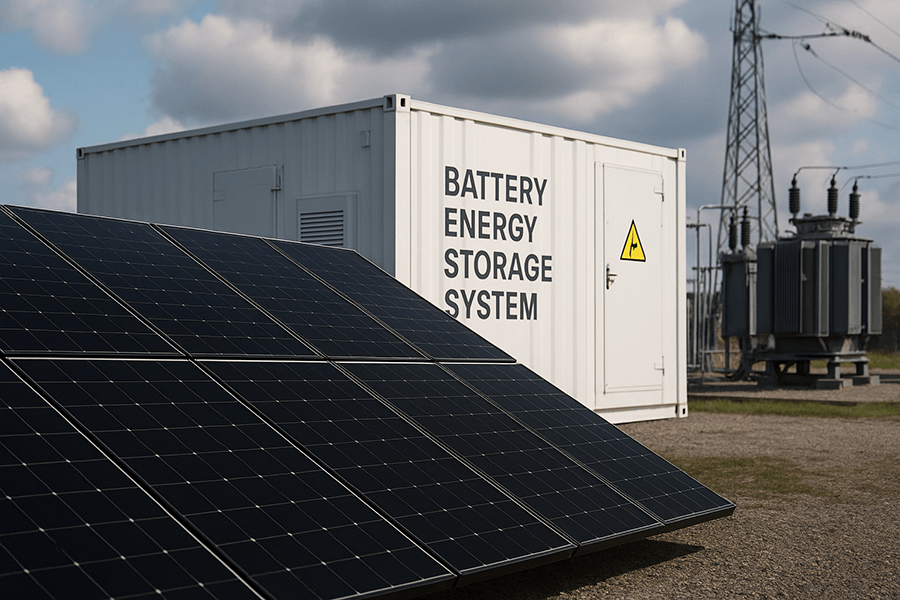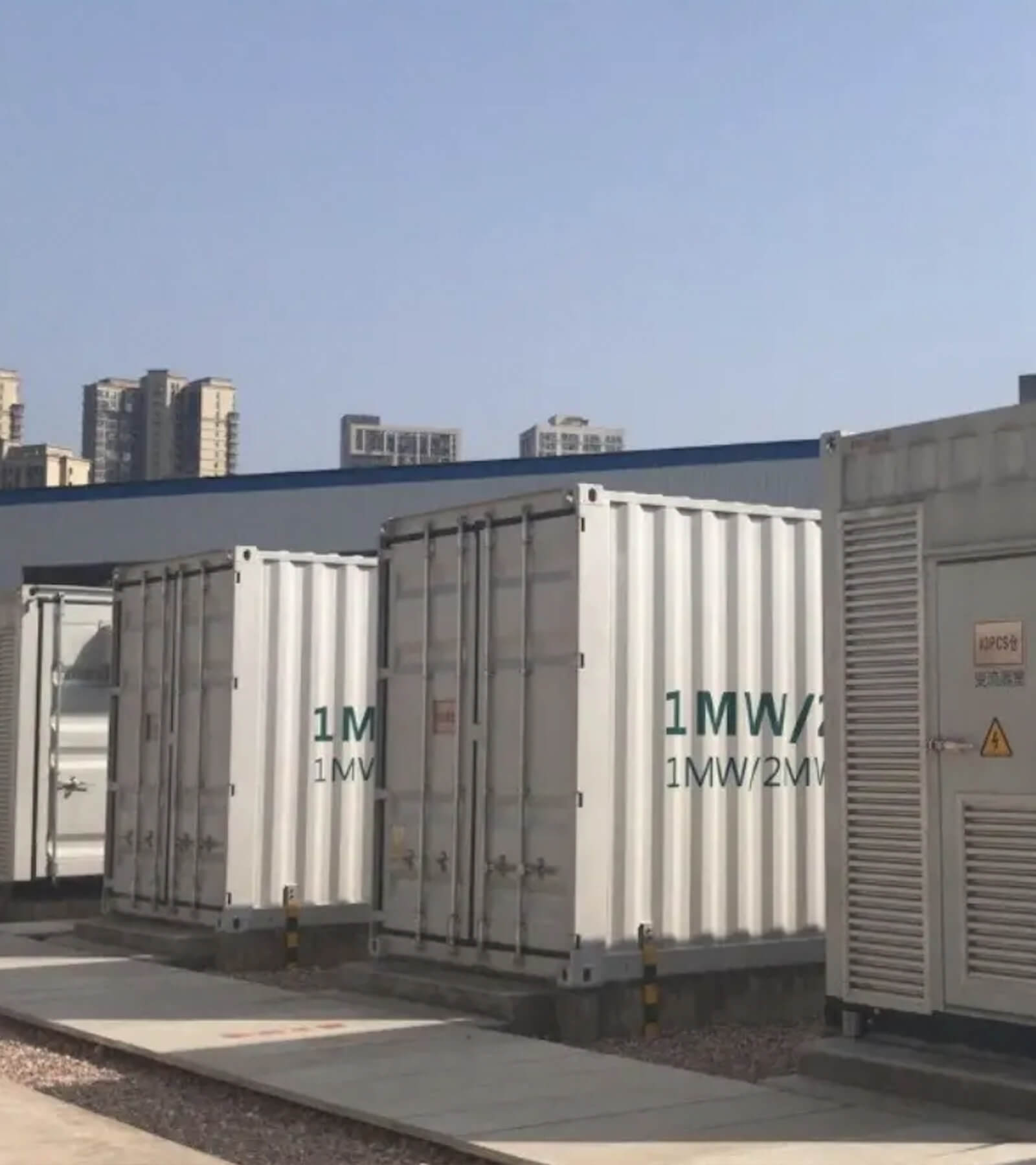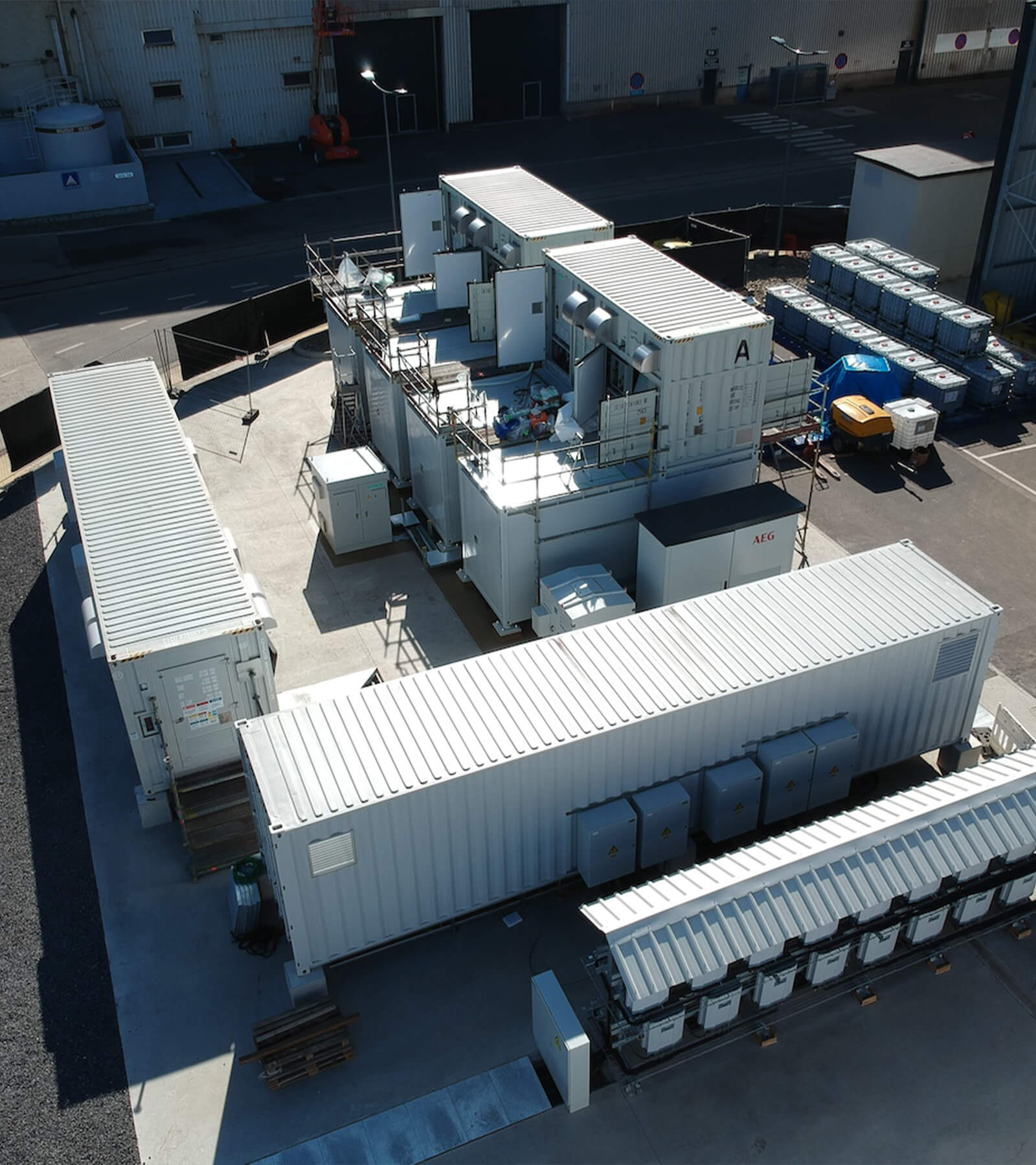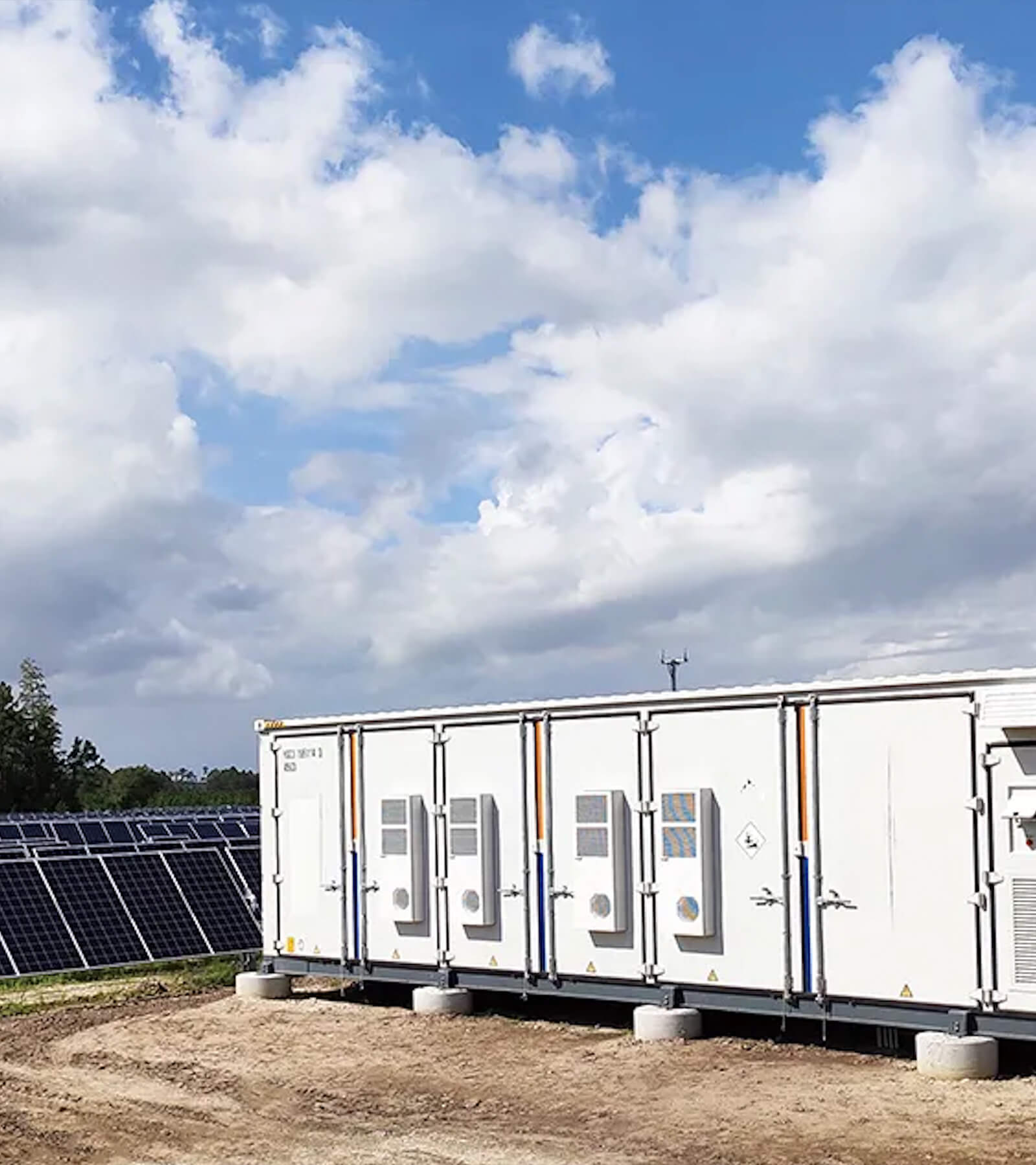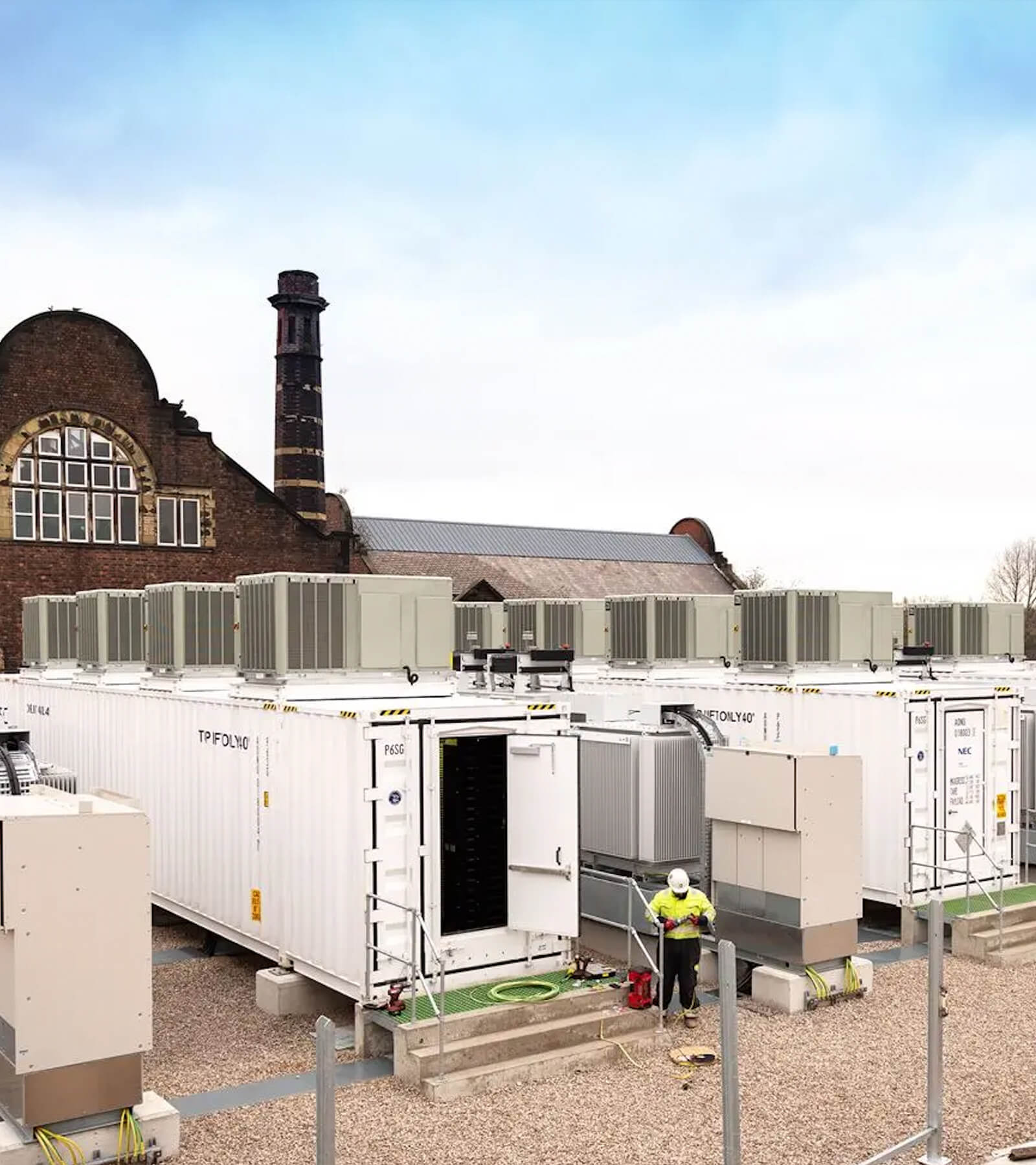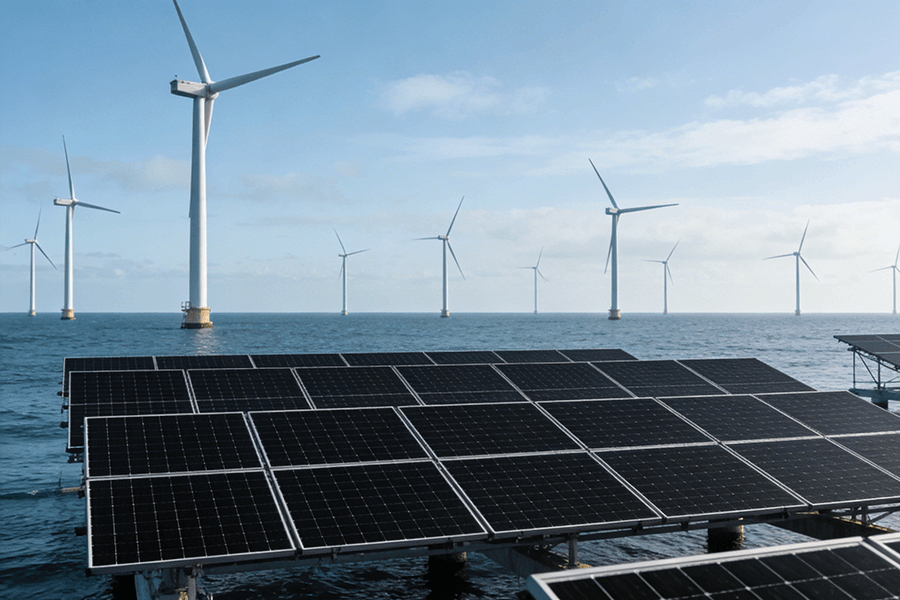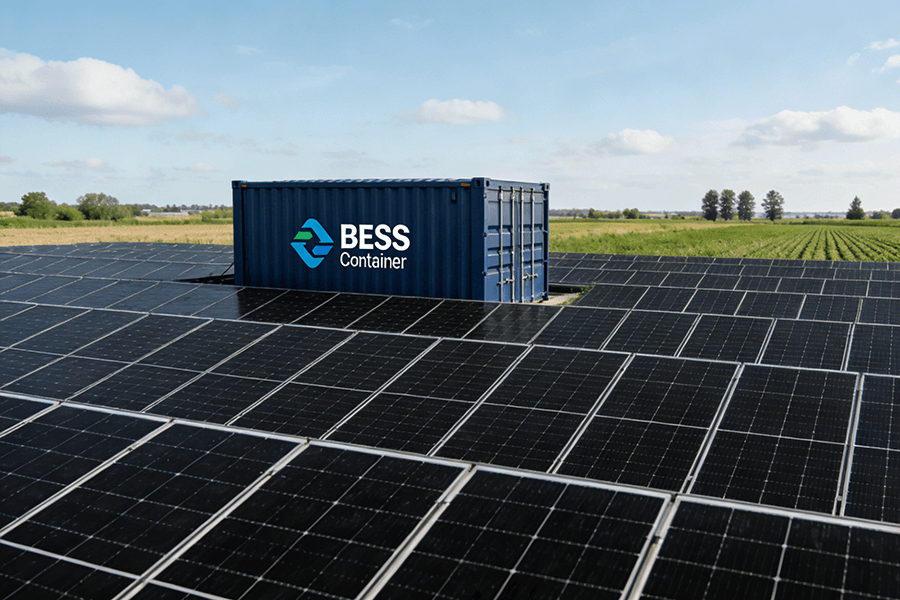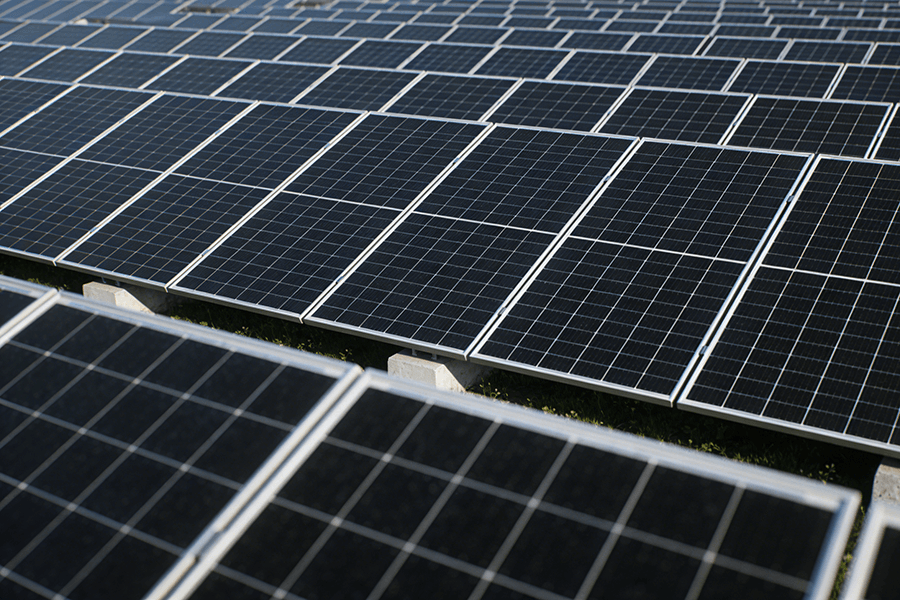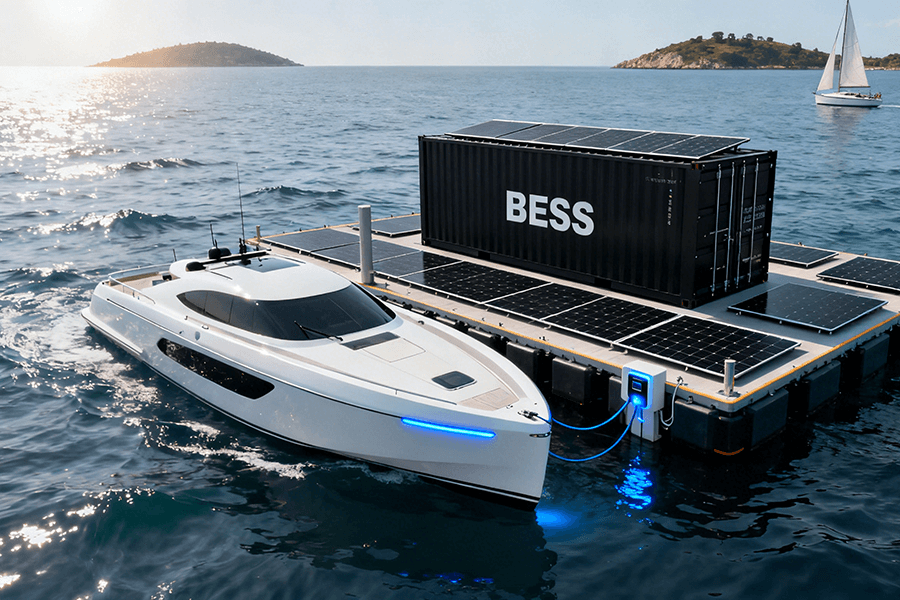Grid stability is no walk in the park, with voltage fluctuations, frequency variations, and peak-load nightmares throwing curveballs. But fear not—BESS containers are here to save the day. This article takes a lighthearted yet thorough look at how these compact powerhouses store excess energy, regulate voltage like a pro DJ, and respond to frequency changes faster than a superhero. With real-world tales from places like Scotland’s Orkney Islands and Australia’s Sydney, we’ll show how BESS container and grid stability go hand in hand. We also chat about the hiccups—costs, battery blues, and safety jitters—and how to smooth them out. By the end, you’ll see why BESS containers aren’t just gadgets; they’re the grid’s new best friends.

Introduction
A. Hook: “The grid – that complex web of wires and power – is like the heart of our modern world, pumping electricity to keep everything from our smartphones to our factories running. But lately, this heart has been having a few palpitations.”
B. Brief overview of the importance of grid stability
Grid stability is the linchpin of our modern energy – dependent society. A stable grid ensures that electricity is delivered at the right voltage and frequency, enabling the seamless operation of countless electrical devices. From powering essential services like hospitals and water treatment plants to fueling economic activities in industries and businesses, any disruption in grid stability can have far – reaching consequences. For instance, in 2020, power outages in the United States cost the economy an estimated (180 – )330 billion, according to the US Department of Energy (
https://www.energy.gov/eere/amo/understanding-and-reducing-costs-electricity-outages).
C. Introduction to BESS containers as a potential solution
BESS (Battery Energy Storage System) containers have emerged as a promising solution to address the grid’s stability woes. These compact yet powerful units are designed to store electrical energy and release it when needed, acting as a buffer between power generation and consumption.
D. Thesis statement: “In this deep – dive, we’ll explore the current grid stability challenges and how BESS containers are stepping up to be the superheroes the grid needs, while also looking at their potential kryptonites and how to deal with them.”
Current Challenges in Grid Stability
A. Voltage fluctuations
- Explanation of what causes voltage fluctuations (e.g., sudden changes in load, distance from power sources)
Voltage fluctuations can be attributed to several factors. Sudden changes in electrical load are a common culprit. When large industrial equipment is switched on or off, it can cause a significant and immediate change in the power demand. For example, in a manufacturing plant, the startup of a high – power electric motor can draw a large amount of current, leading to a momentary drop in voltage.
The distance from power sources also plays a role. As electricity travels through long transmission lines, there is resistance in the wires. According to Ohm’s Law ((V = IR), where (V) is voltage, (I) is current, and (R) is resistance), this resistance causes a voltage drop. In rural areas with long distribution lines, voltage fluctuations are more pronounced. A study by the US Department of Energy found that in some rural regions, voltage can vary by up to 10% due to long – distance transmission (
https://www.energy.gov/sites/prod/files/2014/03/f18/understanding_voltage_and_power_quality.pdf).
- Impact on electrical equipment and the grid (e.g., damaged appliances, reduced efficiency)
Voltage fluctuations can have a detrimental impact on electrical equipment. If the voltage is too low, motors in appliances like refrigerators and washing machines may not run at their optimal speed, leading to reduced efficiency and potentially overheating. High – voltage spikes can be even more damaging, as they can cause electrical components to burn out. In fact, according to a survey by the Insurance Institute for Business & Home Safety, voltage – related damage to electronics and appliances costs US consumers billions of dollars annually (
https://www.ibhs.org/wp – content/uploads/2019/09/2019 – Voltage – Related – Damage – to – Electronics – and – Appliances – Study – FINAL.pdf).
For the grid itself, voltage fluctuations can lead to increased power losses. When the voltage is not at the optimal level, more current is required to deliver the same amount of power ((P = VI)), and this extra current flowing through the resistive elements in the grid results in additional energy dissipation as heat.
- Analogy: “Think of voltage as the water pressure in a pipe. If the pressure keeps fluctuating, your shower might go from a gentle sprinkle to a forceful gush, and that’s not good for your showerhead or your mood. Similarly, voltage fluctuations are not good for our electrical devices or the grid.”
B. Frequency variations
- Reasons for frequency variations (e.g., imbalance between power generation and consumption, issues with power plants)
Frequency variations in the grid are primarily caused by an imbalance between power generation and consumption. In an ideal situation, the amount of electricity generated by power plants should precisely match the demand from consumers at all times. However, in reality, this balance is constantly disrupted. For example, during a heatwave, the sudden increase in air – conditioning usage can cause a rapid spike in power demand. If the power plants are unable to ramp up generation quickly enough, the frequency of the grid can start to drop.
Issues with power plants themselves can also contribute to frequency variations. Equipment malfunctions, such as problems with the turbines or generators, can lead to a sudden reduction in power output. In grids with a high penetration of renewable energy sources like wind and solar, the intermittent nature of these sources further complicates the frequency – balancing act. Wind turbines stop generating power when the wind speed drops below a certain threshold, and solar panels produce less electricity on cloudy days.
- Consequences for the grid (e.g., instability, potential blackouts)
Deviations from the standard grid frequency can have severe consequences. In most grids, the standard frequency is either 50Hz (in Europe, for example) or 60Hz (in the United States). A significant deviation from this can lead to grid instability. As the frequency drifts, motors in industrial machinery, elevators, and other equipment start to operate at incorrect speeds. In extreme cases, if the frequency drops too low or rises too high, it can trigger protective mechanisms in power plants and grid equipment, causing them to shut down. This cascade of shutdowns can ultimately result in blackouts. In 2019, a major blackout in the UK was caused in part by frequency instability following the sudden loss of two power generation units, leaving around 1 million customers without power (
https://www.ofgem.gov.uk/publications/2019 – uk – power – system – blackout – 9 – august – independent – review – final – report).
- Fact: “In many grids, the standard frequency is like a strict speed limit. In 60Hz grids, it should stay within a narrow band like 59.95 – 60.05Hz, and in 50Hz grids, 49.95 – 50.05Hz. Deviate too much, and it’s like a car going way too fast or too slow on a highway – chaos can ensue.”
C. Peak – load management
- Definition and significance of peak – load management
Peak – load management refers to the strategies and techniques used to handle the periods of highest electricity demand in a power grid. These peak – load periods typically occur during specific times of the day, such as early evenings when people return home from work and turn on lights, air conditioners, and other appliances. Managing peak – load is crucial because it helps to ensure that the grid can meet the high demand without overloading. If the grid is unable to supply sufficient power during peak – load, it can lead to brownouts (partial power outages) or blackouts.
- Challenges faced during peak – load periods (e.g., meeting sudden high demand, overloading of power plants)
Meeting sudden high demand during peak – load periods is a significant challenge. Power plants need to be able to quickly increase their power output to match the rising demand. However, many traditional power plants, especially those using fossil fuels, have limitations in how quickly they can ramp up generation. For example, a coal – fired power plant may take several hours to increase its output significantly. In addition, if the peak – load demand exceeds the capacity of the existing power generation fleet, power plants can become overloaded. This not only reduces their efficiency but also increases the risk of equipment failure.
- Real – world example: “Remember those sweltering summer days when everyone cranks up their air conditioners at the same time? That’s peak – load in action. The grid has to work overtime to keep up, and if it can’t, brownouts or blackouts might occur.”
In regions like Texas in the United States, during the summer months, the demand for electricity can skyrocket due to air – conditioning usage. In 2021, a particularly severe heatwave led to record – high electricity demand in Texas. The grid operator, ERCOT, struggled to meet this demand, and as a result, there were widespread blackouts that affected millions of people. This incident highlighted the critical importance of effective peak – load management in ensuring grid stability (
https://www.ercot.com/newsroom/press – releases/2021 – 02 – 15).
How BESS Containers Address Grid Stability Issues
A. Energy storage and release
- Explanation of how BESS containers store excess energy during off – peak hours
BESS containers store excess energy during off – peak hours using rechargeable batteries, typically lithium – ion batteries. During periods of low electricity demand, such as late at night when most people are asleep, the grid may have surplus power generation. The BESS container can be connected to the grid, and the batteries inside are charged. The charging process is controlled by an energy management system (EMS) that monitors the grid conditions and the state of charge of the batteries. For example, if the grid frequency is stable and there is excess power available, the EMS will direct the power to charge the batteries at an optimal rate.
- How they release stored energy during peak demand
When peak – demand periods arrive, the BESS container discharges the stored energy back into the grid. The EMS again plays a crucial role in this process. It continuously monitors the grid’s power demand and voltage and frequency levels. When it detects that the grid is approaching or has reached peak – load conditions, it sends a signal to the power electronics in the BESS container to start discharging the batteries. The power electronics convert the direct current (DC) stored in the batteries into alternating current (AC) that is compatible with the grid. This additional power injection helps to meet the increased demand, reducing the stress on the power generation plants.
- Analogy: “BESS containers are like the energy squirrels of the grid. They gather and store energy when it’s abundant (off – peak) and then release it when everyone else is hungry for power (peak – demand), helping to keep the grid’s energy ‘pantry’ well – stocked.”
B. Voltage regulation
- Role of BESS container’s power electronics in regulating voltage
The power electronics in a BESS container are key to voltage regulation. These components are responsible for controlling the flow of power in and out of the container. When the grid voltage drops, the power electronics can increase the amount of power being injected from the BESS container into the grid. Conversely, if the grid voltage is too high, the power electronics can absorb excess power from the grid and store it in the batteries. For example, a bi – directional power converter in the BESS container can adjust the voltage level by changing the phase angle and magnitude of the output current. This is similar to how a dimmer switch adjusts the brightness of a light by controlling the amount of electrical current flowing through it.
- Technical details of how it senses and corrects voltage fluctuations
The BESS container is equipped with sensors that continuously monitor the grid voltage. These sensors feed real – time data to the control system, which compares the measured voltage with the desired set – point voltage. If there is a deviation, the control system calculates the necessary corrective action. The power electronics then implement this action by adjusting the charging or discharging current of the batteries. In some advanced BESS containers, machine – learning algorithms are used to predict voltage fluctuations based on historical data and real – time grid conditions. This allows for more proactive voltage regulation, minimizing the impact of fluctuations on the grid and connected devices.
- Example: “Just like a skilled DJ adjusts the volume levels to keep the party going smoothly, the power electronics in BESS containers adjust the voltage levels to keep the grid running smoothly.”
C. Frequency regulation
- How BESS containers provide virtual inertia and fast frequency response
In grids with a high penetration of renewable energy sources, the traditional inertia provided by synchronous generators is decreasing. BESS containers can step in to provide virtual inertia. When the grid frequency starts to change, the BESS container can quickly respond by either injecting or absorbing power. For example, if the frequency drops due to a sudden increase in load or a loss of generation, the BESS container can release stored energy within milliseconds. This rapid power injection helps to slow down the rate of frequency change, mimicking the effect of the inertia of large synchronous generators. The ability of BESS containers to provide fast frequency response is crucial in maintaining grid stability, especially in modern grids where the frequency can change rapidly due to the intermittent nature of renewables.
- The ability to detect and respond to frequency changes in milliseconds
BESS containers are equipped with high – speed monitoring and control systems that can detect even small changes in grid frequency in milliseconds. These systems use advanced sensors and signal processing algorithms. Once a frequency change is detected, the control system calculates the appropriate power response and commands the power electronics to adjust the charging or discharging of the batteries accordingly. In comparison, traditional power plants may take seconds or even minutes to respond to frequency changes, making BESS containers a much more agile solution for frequency regulation. A study by the National Renewable Energy Laboratory (NREL) found that BESS containers can provide frequency response within 10 – 20 milliseconds, which is significantly faster than most conventional power generation units (
https://www.nrel.gov/grid/transient – dynamic – stability).
- Fact: “In grids with high renewable energy penetration, the traditional ‘inertia’ that helps keep the frequency stable is decreasing. BESS containers step in to provide this much – needed virtual inertia, reacting way faster than conventional power plants – like a superhero with super – speed.”
Potential Limitations or Concerns
A. Cost
- High initial investment for BESS containers
The initial cost of BESS containers can be quite high. A typical 1 – MWh BESS container can cost anywhere from (500,000 to )1 million, depending on the battery technology, capacity, and additional features (https://www.energy-storage-news.com/2023/05/energy-storage-costs-continue-to-fall-but-supply-chain-issues-persist/). This high upfront cost can be a barrier for many utilities and grid operators, especially those with limited budgets.
- Strategies to reduce costs in the long – term (e.g., economies of scale, government incentives)
However, there are strategies to reduce the long – term costs of BESS containers. Economies of scale play a significant role. As the demand for BESS containers increases, manufacturers can produce them in larger quantities, leading to lower production costs per unit. For example, the cost of lithium – ion batteries, a key component of BESS containers, has fallen by over 85% in the last decade due to increased production volumes (
https://www.iea.org/reports/battery-energy-storage). Government incentives are another way to reduce costs. Many countries offer tax credits, grants, or subsidies for the installation of energy storage systems. In the United States, the Investment Tax Credit (ITC) allows businesses to claim a tax credit of up to 30% of the cost of installing a BESS container (
https://www.irs.gov/newsroom/energy-incentives-for-businesses). These incentives can significantly reduce the initial investment burden.
- Analogy: “Buying a BESS container is like buying a luxury car – it has a high upfront cost. But just like a luxury car can save you money in the long – run with better fuel efficiency and fewer repairs, BESS containers can save the grid money by preventing costly blackouts and reducing the need for expensive infrastructure upgrades.”
B. Battery degradation
- Explanation of how batteries in BESS containers degrade over time
Batteries in BESS containers degrade over time due to several factors, including the number of charge – discharge cycles, temperature, and depth of discharge. Each time a battery is charged and discharged, it undergoes chemical reactions that gradually reduce its capacity. High temperatures can accelerate these chemical reactions, leading to faster degradation. The depth of discharge, which refers to the percentage of the battery’s capacity that is used during each cycle, also affects degradation. Batteries that are discharged to a greater depth (e.g., 80% of their capacity) tend to degrade faster than those discharged to a lesser depth (e.g., 50%).
- Impact on performance and lifespan
Battery degradation leads to a reduction in the capacity of the BESS container. Over time, the container will be able to store less energy, which can affect its ability to meet peak – load demand and provide grid stability services. The lifespan of a typical lithium – ion battery in a BESS container is around 10 – 15 years, depending on usage and operating conditions (
https://www.nrel.gov/docs/fy19osti/72995.pdf). After this period, the battery’s capacity may have degraded to a point where it is no longer economically viable to use in grid – scale applications, and it will need to be replaced.
- Mitigation measures (e.g., proper maintenance, advanced battery management systems)
To mitigate battery degradation, proper maintenance is essential. This includes keeping the batteries within a suitable temperature range (typically between 20 – 25°C) and avoiding extreme charge and discharge conditions. Advanced battery management systems (BMS) can also help. A BMS monitors the state of each battery cell, including its voltage, current, and temperature. It can optimize the charging and discharging process to minimize degradation. For example, the BMS can prevent overcharging or deep discharging of the batteries. Additionally, some BESS containers use battery balancing techniques to ensure that all cells in the battery pack age uniformly, extending the overall lifespan of the battery system.
- Fact: “Batteries in BESS containers are like the tires on a car. They wear out over time with use. But with regular maintenance and the right ‘tire – care’ (advanced battery management systems), we can extend their lifespan and keep them performing well.”
C. Safety concerns
- Potential safety risks associated with BESS containers (e.g., fire hazards)
BESS containers pose some safety risks, with fire hazards being one of the most significant. Lithium – ion batteries can catch fire if they are damaged, overcharged, or exposed to high temperatures. This is because the electrolytes in lithium – ion batteries are flammable. In rare cases, a thermal runaway can occur, where the battery cell overheats and ignites, potentially spreading to other cells in the container. In 2022, there were several reported cases of BESS container fires in the United States and Europe, highlighting the need for effective safety measures (
https://www.firehouse.com/operations-training/news/21272276/battery-energy-storage-systems-fire-safety-concerns).
- Safety features and regulations in place to address these concerns
To address these safety concerns, BESS containers are equipped with a range of safety features. These include fire – suppression systems, such as sprinklers or inert gas systems, which can quickly extinguish a fire if it occurs. Thermal management systems help to keep the batteries at a safe temperature, reducing the risk of overheating. Additionally, BESS containers are designed with ventilation systems to remove any flammable gases that may be released by the batteries. There are also strict regulations and standards in place for the design, installation, and operation of BESS containers. For example, the National Fire Protection Association (NFPA) has developed standards (NFPA 855) specifically for battery energy storage systems, which cover aspects such as fire safety, electrical safety, and siting (
https://www.nfpa.org/codes-and-standards/all-codes-and-standards/list-of-codes-and-standards/detail?code=855).
- Example: “BESS containers are equipped with safety features like fire – suppression systems, just like a building has fire alarms and sprinklers. These safety measures ensure that any potential risks are minimized.”
Summary of Potential Limitations and Mitigation Strategies
| Limitation |
Description |
Mitigation Strategies |
| High initial cost |
1 – MWh BESS containers cost
500,000 − 1 million upfront.
|
– Economies of scale from increased production.- Government incentives (e.g., 30% ITC in the US). |
| Battery degradation |
Capacity reduces over time due to charge – discharge cycles, temperature, and depth of discharge; lifespan of 10 – 15 years. |
– Maintain batteries within 20 – 25°C.- Use advanced BMS to prevent overcharging and deep discharging.- Employ battery balancing techniques. |
| Safety concerns |
Fire hazards from lithium – ion batteries due to damage, overcharging, or high temperatures. |
– Fire – suppression systems (sprinklers, inert gas).- Thermal management systems.- Compliance with regulations like NFPA 855. |
Maxbo Solar
A. Introduction to Maxbo Solar
- Who we are and our mission
At Maxbo Solar, we are a leading provider of solar energy and energy storage solutions. With over a decade of experience in the industry, we are committed to developing innovative technologies that make renewable energy more accessible and reliable. Our mission is to accelerate the global transition to a clean energy future by providing high – quality, cost – effective BESS containers and solar products that contribute to grid stability and reduce greenhouse gas emissions.
- Our experience in the solar and energy storage industry
We have successfully completed numerous projects around the world, ranging from small – scale residential solar installations to large – scale utility – grade BESS container deployments. Our team of experts has in – depth knowledge of solar energy systems, battery technology, and grid integration, allowing us to provide customized solutions that meet the specific needs of our customers. We have partnered with utilities, businesses, and governments to implement energy storage projects that have improved grid stability, reduced energy costs, and increased the penetration of renewable energy.
- “At Maxbo Solar, we’re not just another company in the energy game. We’re like the mad scientists of the solar world, constantly innovating and pushing the boundaries to make the grid more stable and sustainable.”
B. Our BESS container solutions
- Features and benefits of our BESS containers
Our BESS containers are designed with a focus on performance, reliability, and safety. They are equipped with high – quality lithium – ion batteries that offer a long lifespan and high energy density. The power electronics in our containers are advanced, allowing for precise voltage and frequency regulation. Our energy management system is intelligent, enabling seamless integration with the grid and optimal charging and discharging. In addition, our BESS containers are compact and modular, making them easy to install and expand. They also come with a comprehensive warranty and maintenance package to ensure long – term performance.
- How they contribute to grid stability
Our BESS containers play a crucial role in enhancing grid stability. They can store excess energy during off – peak hours and release it during peak demand, reducing the stress on the grid. The advanced power electronics in our containers enable fast and accurate voltage and frequency regulation, helping to mitigate fluctuations. They also provide virtual inertia and fast frequency response, which is essential for grids with high renewable energy penetration. By providing these services, our BESS containers help to improve the reliability and efficiency of the grid, ensuring a stable power supply for consumers.
- “Our BESS containers are like the Swiss Army knives of grid stability. They come packed with features that can store energy, regulate voltage and frequency, and do it all with top – notch efficiency. And if you want to learn more about our amazing products, just head over to our website at www.maxbo – solar.com.”
C. Future plans and innovations
- What we’re working on to improve our BESS container technology
We are constantly investing in research and development to improve our BESS container technology. Currently, we are working on developing batteries with higher energy density and longer lifespans. We are also exploring the use of artificial intelligence and machine learning to further optimize the performance of our energy management systems. This will allow our BESS containers to better predict grid conditions and respond more proactively to stability issues. In addition, we are looking into integrating renewable energy sources, such as solar panels, directly into our BESS containers to create self – contained, off – grid energy systems.
- How we aim to further contribute to grid stability in the future
Our goal is to continue to be at the forefront of the energy storage industry, providing innovative solutions that help to build a more stable and sustainable grid. We plan to expand our product portfolio to include larger – capacity BESS containers and more advanced grid – integration technologies. We also aim to collaborate with other industry stakeholders, including utilities, research institutions, and governments, to develop new standards and best practices for the use of BESS containers in grid stability applications. By working together, we can ensure that BESS containers play an even greater role in the transition to a clean energy future.
- “We’re already cooking up some new ideas in our labs. Think of it as a high – tech energy – storage recipe that will make our BESS containers even more powerful and effective in keeping the grid stable. Stay tuned by visiting our website regularly!”
Conclusion
A. Summary of key points
In this article, we have explored the current challenges in grid stability, including voltage fluctuations, frequency variations, and peak – load management. We have discussed how BESS containers address these issues through energy storage and release, voltage regulation, and frequency regulation. We have also provided real – world examples of how BESS containers have been used to stabilize grids in areas with high renewable energy penetration (Orkney Islands) and regions facing peak – load challenges (Sydney). Additionally, we have examined the potential limitations and concerns associated with BESS containers, such as cost, battery degradation, and safety risks, and discussed strategies to mitigate these issues. Finally, we introduced Maxbo Solar and our BESS container solutions.
B. Restatement of the importance of BESS containers for grid stability
BESS containers are becoming increasingly important for ensuring grid stability in our modern energy landscape. As the penetration of renewable energy sources continues to grow, the need for flexible and reliable energy storage solutions like BESS containers will only increase. They provide a cost – effective and efficient way to manage grid fluctuations, meet peak – load demand, and integrate renewable energy into the grid.
C. Call to action (e.g., encourage further research, investment in BESS technology)
It is crucial that we continue to invest in research and development to improve BESS container technology and reduce costs. Governments, utilities, and businesses should work together to promote the deployment of BESS containers and create a supportive policy environment. By doing so, we can build a more stable, reliable, and sustainable energy grid for the future.
D. Closing statement
“In conclusion, BESS containers are the unsung heroes that the grid desperately needs. They can tackle the current stability challenges with ease, and with companies like Maxbo Solar leading the charge, the future of grid stability looks bright. So, let’s all jump on the BESS – bandwagon and help make our energy grid the stable, reliable system it deserves to be!”
